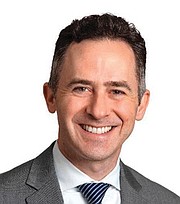Public school enrollment down 46,000 statewide since pandemic
Jeremy M. Lazarus | 12/2/2021, 6 p.m.
Richmond Public Schools has reported that 2,700 fewer students were enrolled Sept. 30 as the new school year began than in 2019 before the start of the pandemic.
Though there is optimism that enrollment has started to climb, the initial report represents a sharp and unexpected 11 percent drop in student numbers and is apparently the most significant decline in enrollment in recent years.
The drop in enrollment comes from the Virginia Department of Education’s annual fall membership report that relies on Sept.30 student enrollment data that the state’s 132 public school districts are required to provide.
Richmond is not alone.
According to the Virginia Department of Education, student enrollment has declined by 46,113 students statewide. As of Sept. 30, statewide enrollment was at 1.25 million students in pre-kindergarten through 12th grade, down from the nearly 1.3 million students reported enrolled as of Sept. 30, 2019.
School divisions in Chesterfield and Henrico counties also reported declines from pre-pandemic enrollment levels in 2019, though far smaller than Richmond’s drop.
Chesterfield, which currently enrolls more than 62,000 students, is down less than 1 percent from 2019 enrollment levels, while Henrico, which currently has more than 48,000 students, has reported a 3 percent decline from 2019.
Some small school divisions have been hit harder. Charles City County, for example, reported current enrollment is down 15 percent from 2019, a big deal for a system that enrolls fewer than 700 students and currently reports just 528 students as of Sept. 30.
Still, RPS’ reported reduction in student numbers is more notable given the current debate between the city and RPS over how many students a proposed replacement high school for George Wythe in South Side should accommodate.
The decline also has shown up amid striking growth in RPS funding. Based on RPS budget figures, per-pupil spending now hovers around $22,000 a year, an increase of about $6,000 per student since the 2018 school year.
The infusion of city, state and federal resources now ranks RPS among the highest-spending districts in the state when it comes to education, undermining the oft-stated claim that city schools are underfunded.
Based on enrollment numbers in the RPS budget and on state figures, RPS started the 2019-20 school year with 23,912 students in pre-kindergarten through 12th grade compared with the 21,179 students reported enrolled at the end of September this year.
The 2019-20 figure excludes 1,300 students enrolled in a virtual school for which RPS served as fiscal agent.
In response to School Board concerns, RPS Superintendent Jason Kamras plans to provide an enrollment update at the board’s next meeting on Monday, Dec. 6. There are expectations his report will show enrollment has increased since the Sept. 30 report was issued.
School Board Vice Chair Jonathan Young, 4th District, said he has been told to expect the update to show a “smaller drop in numbers, possibly around 500 students.” He said that is still concerning because it could lead to a reduction in state support but would be less impactful than the loss of 2,700 students.
RPS spokesperson Sarah Abubaker said attendance liaisons and other staff have been working to locate missing students and get them back in class.
The VDOE report shows that the enrollment drop has been more significant among pre-kindergarten and elementary grades in Richmond and other school divisions.
Pre-K enrollment was off 8.6 percent and kindergarten enrollment dropped more than 5 percent from 2019.
Richmond reported fewer than 1,000 pre-k students in its Sept. 30 information, compared with more than 1,500 pre-k students in 2019.
State education officials have indicated that the loss of students appears to have been largely due to a lack of a vaccine until recently for younger children, increasing parental concern about their children’s risk of exposure to the virus.
The enrollment decline could have an impact on state funding contributions to public education, given that they are based on the number of students enrolled in each division.
During the current two-year budget period, 2020-22, the General Assembly provided $442 million to keep school divisions from losing funding as the result of enrollment losses caused by the pandemic.
School advocates are expected to lobby for the legislature to prevent any losses in state aid in the upcoming two-year budget cycle for divisions that are still experiencing enrollment declines.









